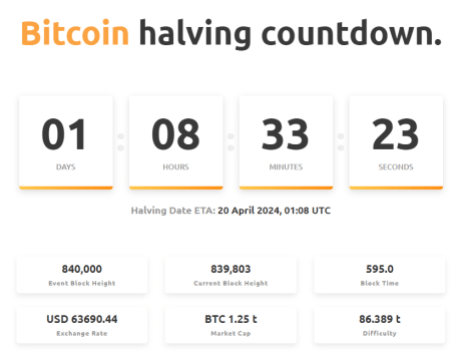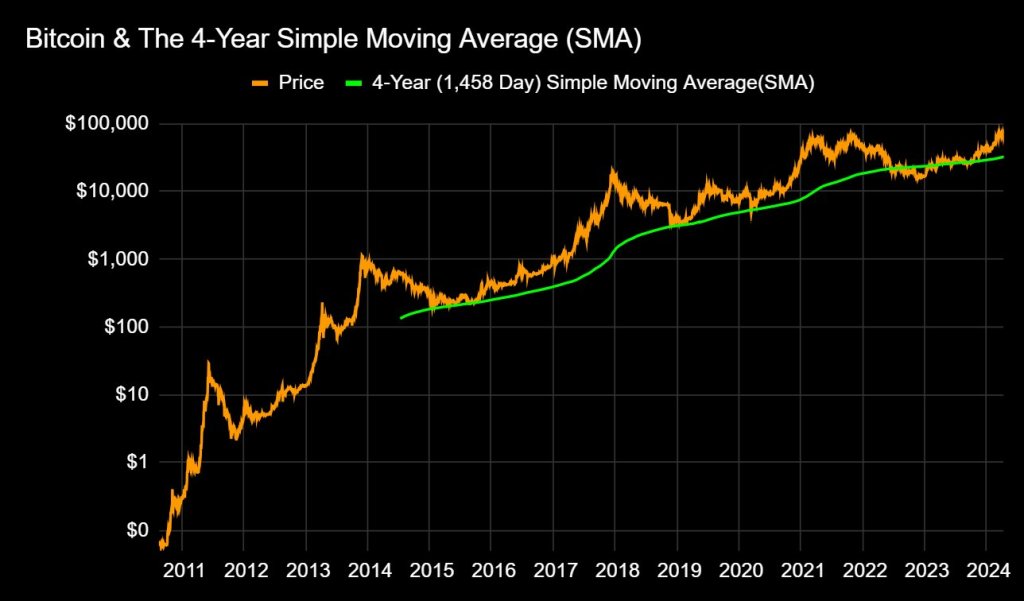Crypto expert Michaël van de Poppe has provided insights into what to expect when the Bitcoin halving occurs on April 19. As part of his analysis, van de Poppe suggested that the attention might shift from Bitcoin once the event occurs.
A Narrative Shift To Occur Post-Halving
Van de Poppe mentioned in an X (formerly Twitter) post that narratives will change as the halving event approaches but failed to specify what the new narrative will be when this happens. However, in a previous X post, the crypto expert laid out some of his expectations for the crypto market going forward, which included what he expected the new narrative to be.
According to Van de Poppe, the narrative will shift to Ethereum (ETH) and projects that are focused on Decentralized Physical Infrastructure Networks (DePIN) and Real World Assets (RWA). These sectors, along with Artificial Intelligence (AI) and meme coins, have been projected to be among the leading narratives in this bull run.
Meanwhile, the crypto expert, who has so far continued to state that altcoins are greatly undervalued, expects these crypto tokens to bounce “in their Bitcoin pairs” once the hype around the halving is over. Furthermore, Van de Poppe mentioned that altcoins will show bullish strength from this second quarter until the summer after which a correction will come in the third quarter of the year.
Before now, the crypto expert listed ten altcoins he believes could make the most price gains when the altcoin season begins in full force. These tokens include Chainlink (LINK), Celestia (TIA), Arbitrum (ARB), Polkadot (DOT), Cosmos (ATOM), DYDX (DYDX), WooNetwork (WOO), Sei (SEI), Skale Network (SKL), and Covalent (CQT).
Expectations For Bitcoin
In the short term, Van de Poppe expects Bitcoin to experience a relief bounce to around $70,000. However, he didn’t sound so bullish about the flagship crypto’s long-term trajectory, predicting that Bitcoin will face a period of consolidation that he doesn’t expect to change in the “coming months.”
In another X post, he said, “It’s a waiting game on Bitcoin currently, as momentum is relatively gone.” He added that he expects Bitcoin to continue “the retracement and consolidation,” while altcoins will bounce up in their BTC pairs during this period.
This predicted consolidation period looks to be the re-accumulation phase in the stages of Bitcoin halving, which crypto analyst Rekt Capital once referred to. Elaborating on what this period is like, Rekt Capital stated back then that many investors get “shaken out in this stage due to boredom, impatience, and disappointment with lack of major results in their BTC investment in the immediate aftermath of the Halving.”
Once this period is over, Bitcoin is expected to make its “parabolic uptrend,” a phase that Rekt Capital noted historically lasts just over a year. In line with this, it is worth noting that most of Bitcoin’s price gains usually come between six months to a year after the Bitcoin halving has occurred.





